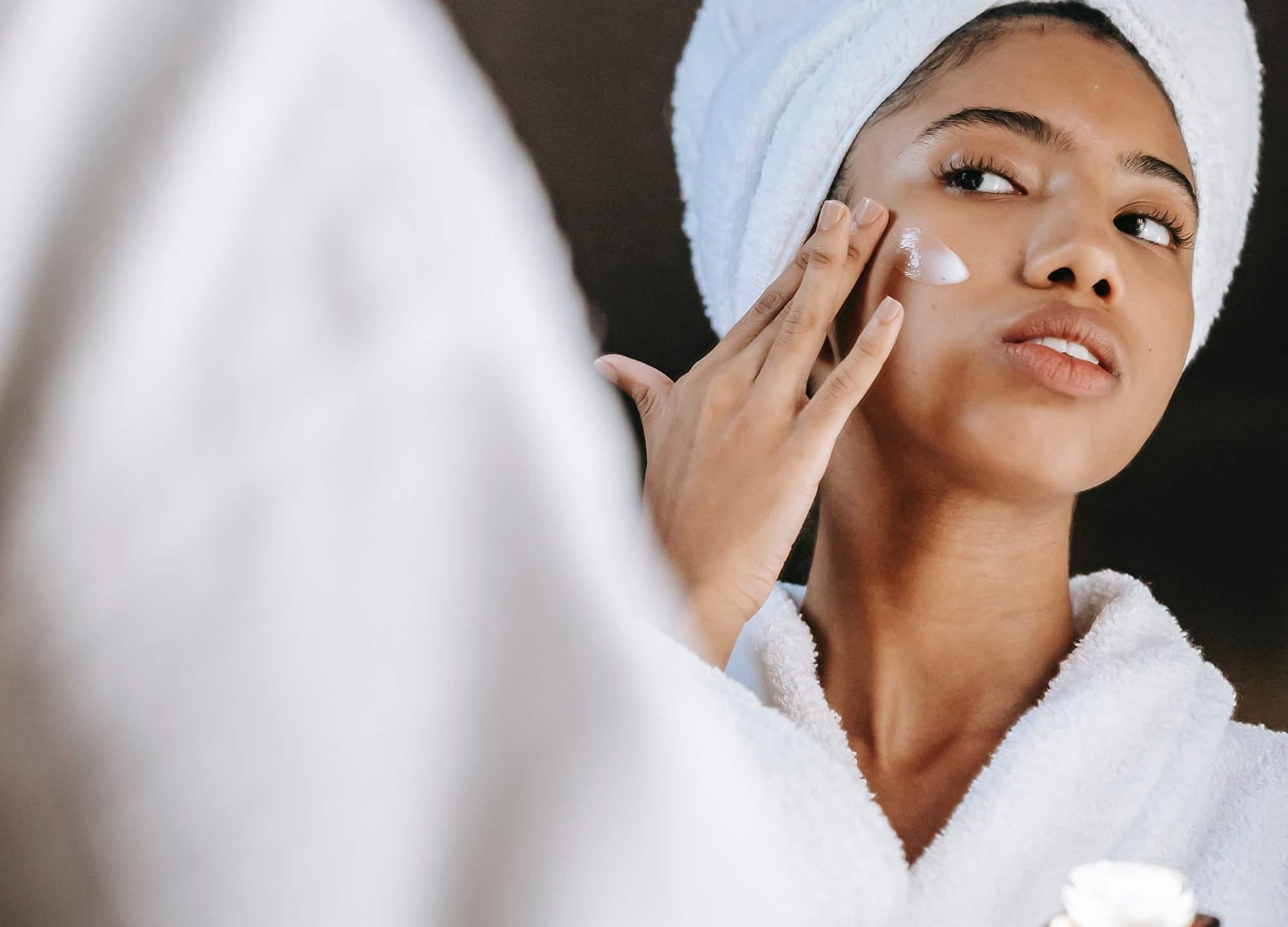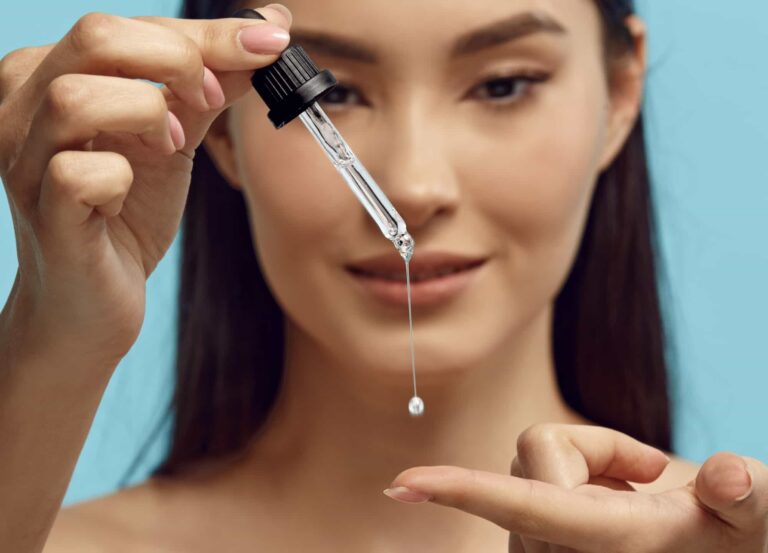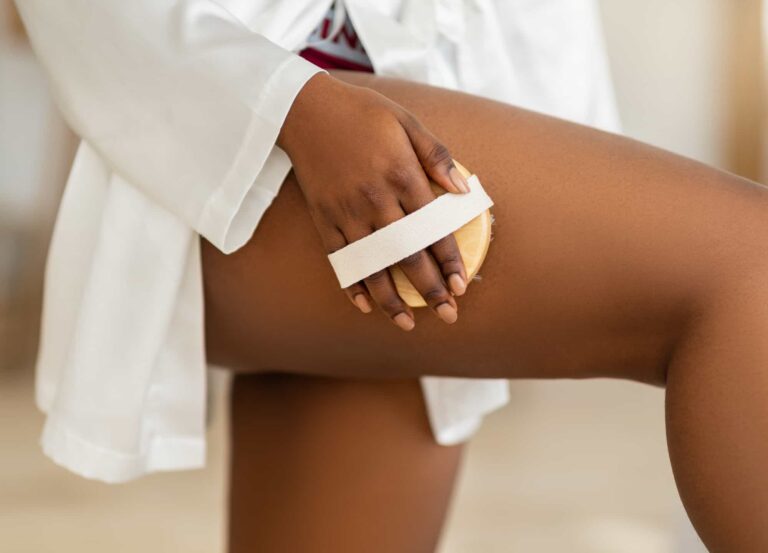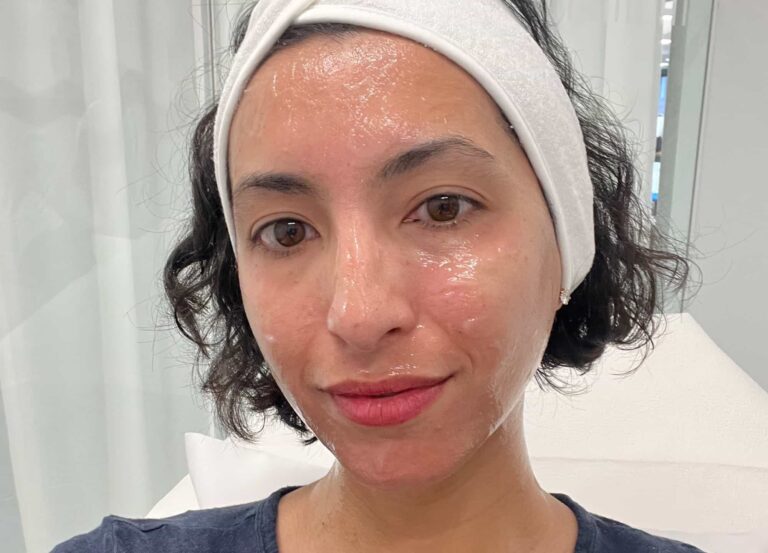While chemical peels and lasers can be a secret weapon for achieving skin goals, they tend to serve up a not-so-pretty side effect before those longed-for results kick in: flaking. To help you look your best as your treatment begins to work its magic, we asked leading MDs for their top tips on caring for skin—and minimizing pesky flakes—following a peel or laser treatment.
First, how much flaking is expected after peels and lasers?
Certain resurfacing treatments can result in more dryness and flakes than others. Nancy Samolitis, MD, a board-certified dermatologist in West Hollywood, California, explains that the level of peeling following medical-grade chemical peels and resurfacing laser treatments varies based on several factors, including the depth of the peel, the energy of the laser, and the density of the laser treatment.
“Light, superficial peels and lasers, like glycolic peels and the Clear + Brilliant laser, can result in small flakes of skin, peeling for up to a week,” she says. “But deeper treatments, like higher-concentration TCA Peels and Fraxel or CO2 lasers, can remove 50% to 100% of the top layers of skin and can have fairly dramatic amounts of skin peeling.” Robert Schwarcz, MD, a board-certified oculoplastic surgeon in New York City, adds that other ablative lasers, like the Erbium YAG, yield the most peeling post-treatment, in his experience.
Especially if you opt for more intensive treatments, Dr. Samolitis says, you’ll need to follow a dedicated post-care regimen “to make sure everything heals beautifully, with minimal risk of complications like infection or scarring.”
What happens if you pick at peeled skin?
“Trying to expedite the peeling process often leads to irritation, allergic reactions, and breakouts,” Dr. Samolitis warns. Do not pick at peeling skin under any circumstances.
“The skin that is left behind—even if it is rough, scabbed, dry, or peeling—is protecting the new skin below that will be revealed when the treated skin exfoliates naturally,” she explains. She likens flaking, post-treatment skin to a natural bandage that will “come off on its own when the new skin underneath is healthy.”
“The dead skin, just prior to peeling off, also acts as a wound protectant and should not be peeled manually,” Dr. Schwarcz adds, as this “can cause pigmentation or scarring.” Sarmela Sunder, MD, a board-certified facial plastic surgeon in Beverly Hills, California, offers a similar warning: “The skin underneath the prematurely peeled skin may be erythematous [inflamed and red] and can hyperpigment in certain skin tones—especially in skin of color.”
How to deal with flaking skin after a chemical peel or laser
While you may have the urge to address your flaking skin the second it starts to shed, try to hold off. “The flakes after a resurfacing treatment are normal and part of the process,” Dr. Samolitis reiterates. Of course, if you don’t have the luxury of hiding out at home while healing, you’ll want to minimize flakes as much as possible while avoiding damage to the skin.
1. Adjust your lifestyle accordingly
Flaking can occur anywhere from a few days to a week or two post-treatment—ask your provider what to expect so you can tweak your routine or adjust your social calendar. “You should plan the procedure around any upcoming events so you don’t need to expedite the healing process,” Dr. Samolitis says.
Additionally, Dr. Sunder advises against exercising heavily within the first five to seven days of a peel, “to avoid excessive swelling and prevent sweating, which can cause breakouts and impact final results.”
Remember: slow and steady is the name of the game to prevent hyperpigmentation, scarring, and other types of skin damage and inflammation after getting your aesthetic treatment.
2. Nix irritating ingredients from your skin-care routine
Adjust your skin-care regimen so that it’s suitable for your post-treatment skin. “Avoid products with active ingredients, like exfoliating acids or retinols, until your skin is completely recovered and feels back to normal,” Dr. Samolitis advises. Erring on the side of caution, you’ll also want to pause other active ingredients, such as vitamin C, to minimize the potential for irritation.
Dr. Schwarcz says you can resume your regular regimen only “once the skin has reepithelialized and is less inflamed or pink,” which can take anywhere from one to two weeks. It’s a good idea to consult your provider before reintroducing actives into your routine.
3. Make way for mild cleansers and healing balms
Opt for calming products and apply them with a light touch. “I advise patients to use a gentle cleanser with thoroughly cleaned, bare hands,” Dr. Sunder says. “I don’t allow patients to use washcloths until after the first week, and even then, there should be a gentle dabbing motion” rather than scrubbing, tugging, or pulling.
Dr. Samolitis agrees that the best way to treat flaking skin post-treatment is to take an easy-does-it approach. “Cleansing with a hydrating, gentle cleanser and using a lot of post-procedure barrier-protecting cream will help make your skin look smoother and more hydrated while the healing process is occurring,” she explains. (Our experts like La Roche Posay Cicaplast Balm B5 and REN Clean Skincare Evercalm Overnight Recovery Balm.)
Before heading out, be sure to apply a high-SPF, broad-spectrum sunscreen and reapply every couple of hours. Dr. Sunder recommends using mineral sunscreen with zinc oxide and/or titanium dioxide that won’t irritate peeling skin.
4. Try a vinegar soak, to speed recovery
While doing a DIY skin treatment directly after your peel or laser may sound ill-advised, both Drs. Schwarcz and Sunder give this home remedy the green light.
“Some surgeons recommend vinegar soaks with gauze the first few days after [a strong] peel,” Dr. Sunder notes. “This [should be] performed with gentle application and removal, without rubbing or tugging.” Dr. Schwarcz suggests diluting the potency of the vinegar by adding only “a spoonful of vinegar in a cup of water, to dab with gauze,” which will still offer antimicrobial benefits to aid in your skin’s recovery.
5. Trim large, loose flakes with sterile, blunt scissors
Dr. Sunder offers one final tip, to help you look your best while skin is shedding. “Larger areas of peeling skin may be trimmed with blunt scissors under the guidance of a medical provider,” she shares—but “if and only if your doctor gives you clearance.”
If you get the all-clear, thoroughly wash your hands and sterilize scissors with alcohol or an antiseptic solution; go only after flakes that are long enough to trim; and be extra careful not to nick, pull, or tug at the skin with scissors in the process.











